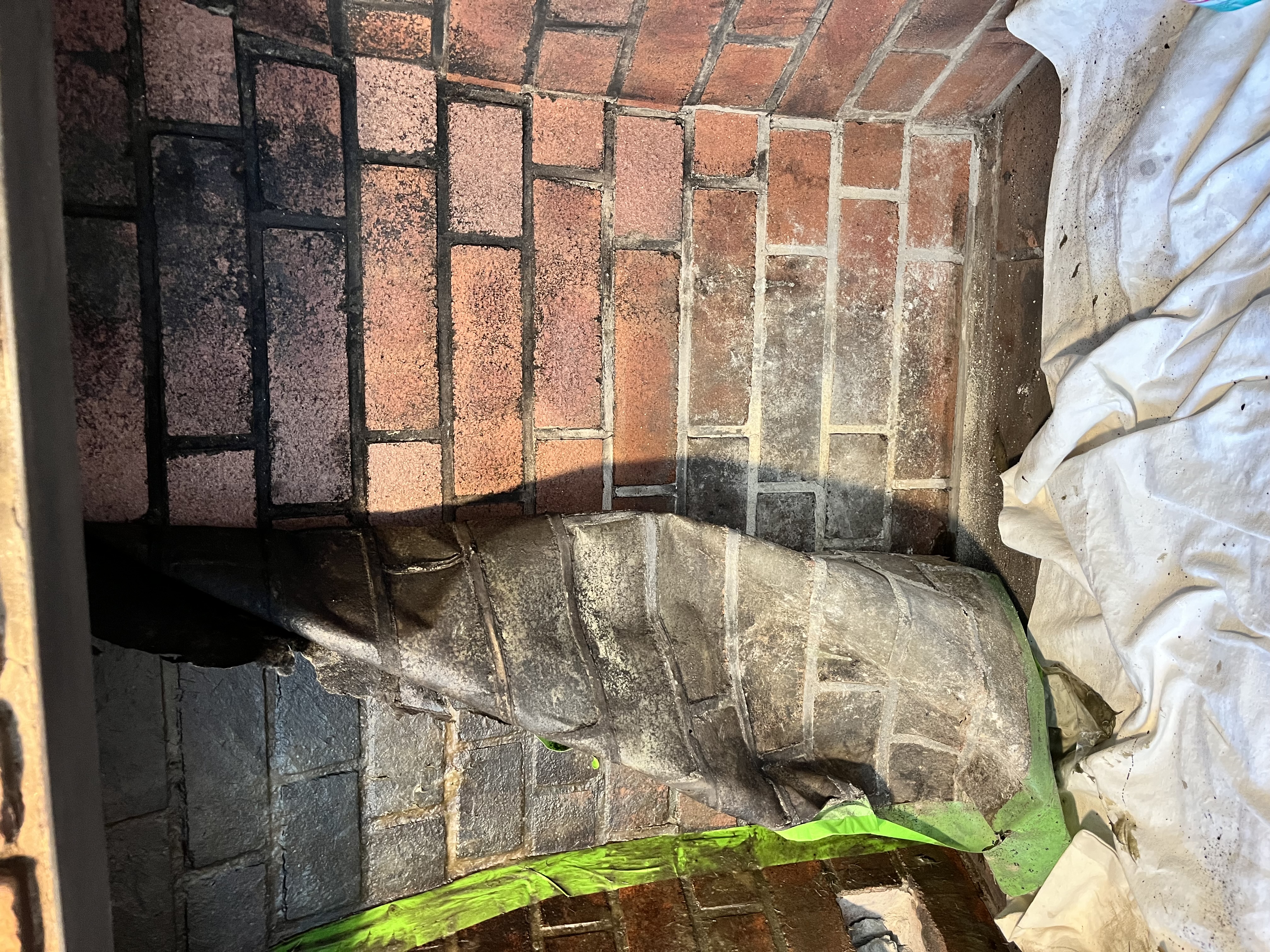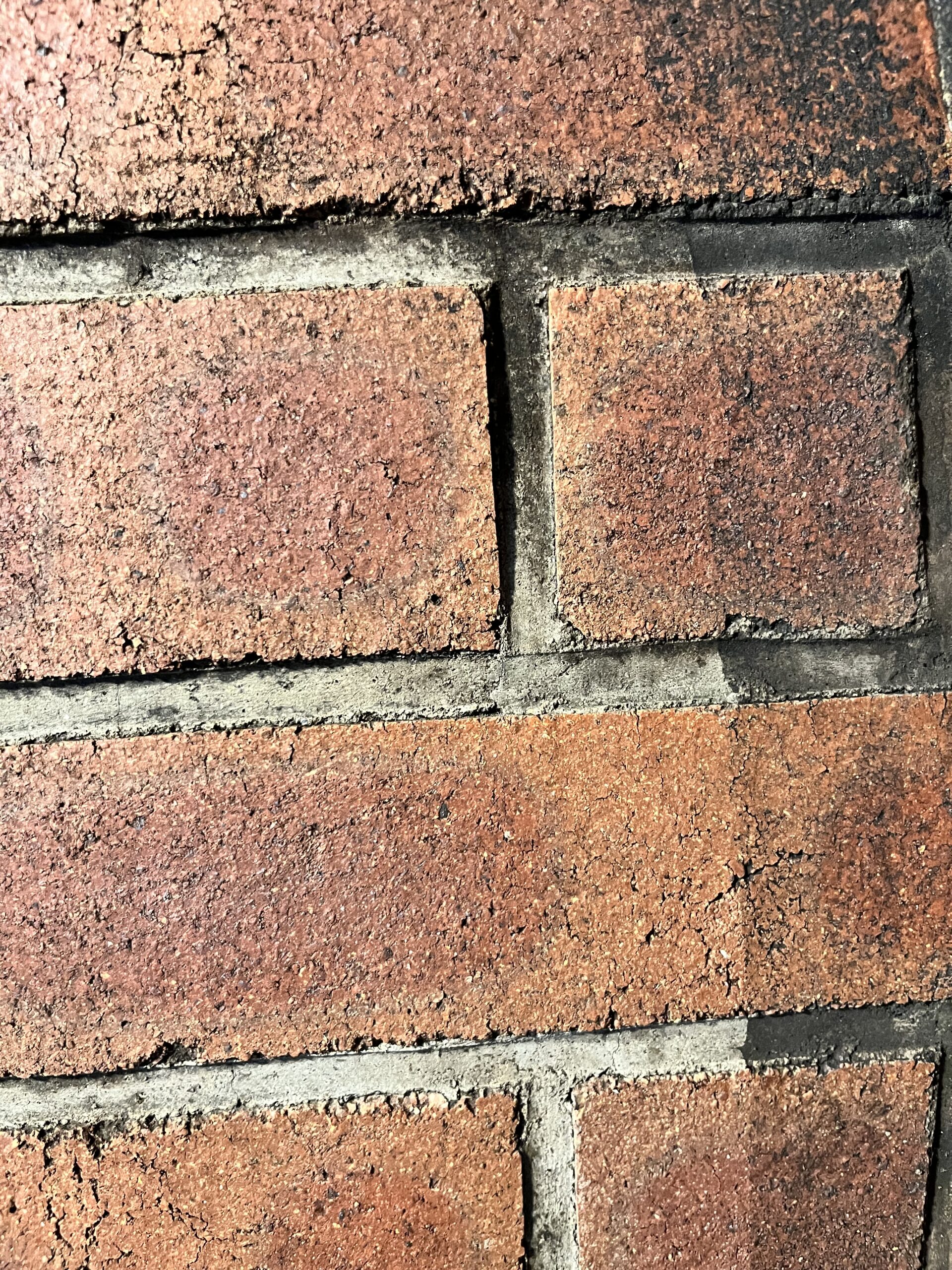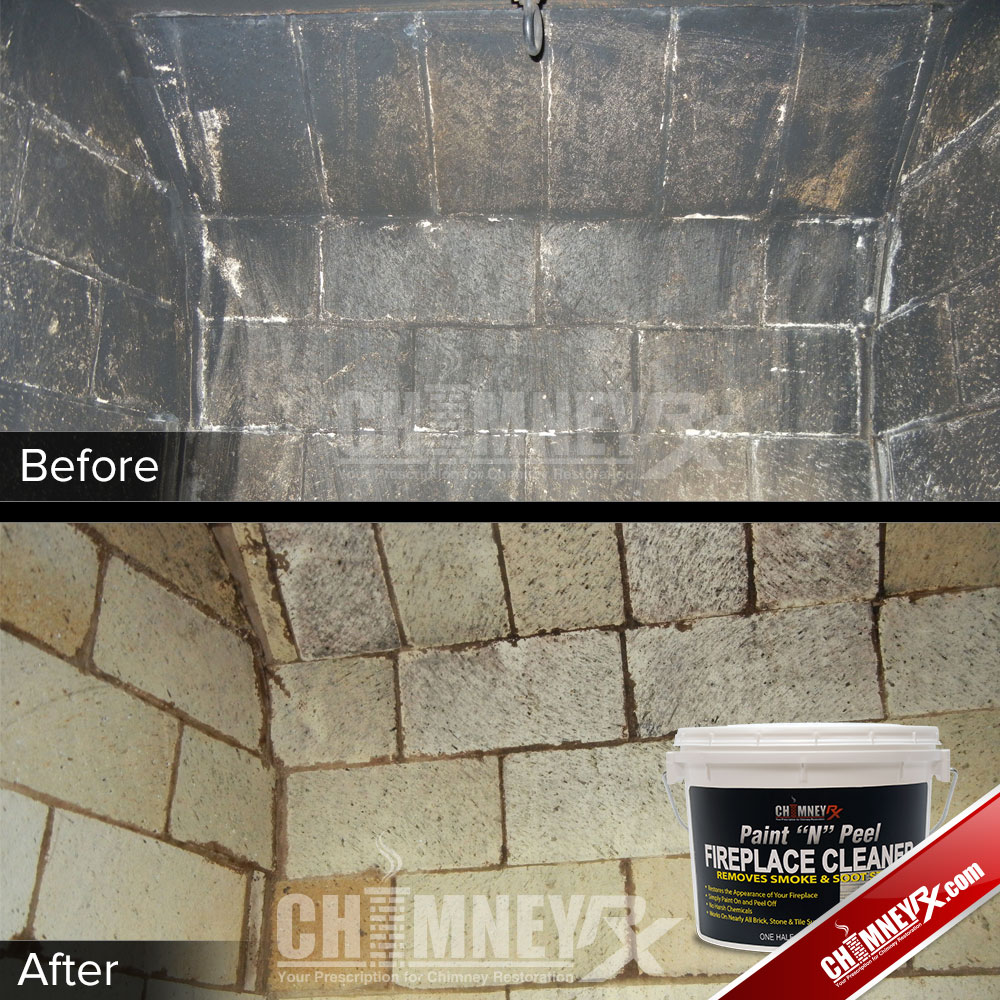Wood burning creates smoke as well as byproducts that build up to create creosote. Dark soot covering your bricks, glass, and chimney bricks is not only unsightly but if allowed to build up can create odors and even catch fire.
Fire requires oxygen to burn wood completely. If your fire is staved for air it can lead to incomplete combustion and this is when the oils from the wood are not burned and instead travel up the chimney in the smoke. As the smoke travels up the chimney, it cools as it rises and can form a residue known as creosote.
This creosote can catch on fire if it builds up too much which is why it is essential to have regular fireplace cleanings.
The Three States Creosote in your chimney
Stage 1 – Creosote begins as a loose, flaky deposit that can be easily brushed away.
Stage 2 – Then it turns into a tar-like deposit which can be difficult to remove, often requiring specialized brushes or scrapers.
Stage 3 – The creosote becomes hardened and is much more difficult to remove. At this stage, it will also begin to drip like candlewax when it reaches a high enough temperature.
Prevent creosote from forming by burning dry hardwood in small, hot fires. You want less smoke and more flames. Also, warm your flue before starting a fire so you can start off with a good draft. Keep your fire burning hot with flames, rather than smoldering, which can create excessive smoke.
In between chimney cleanings, you can use any of the following products to reduce creosote. The minerals in these products attach to the creosote and transform it into more of an ash powder.
Follow the directions on the packages and add to a hot fire so the product reaches the top of the chimney where creosote forms the most easily.
Cleaning Soot from Bricks and Glass
Various sprays and gels can be used to clean soot build-up from glass and bricks. You will need to apply a lot of elbow grease and prepare for a messy job. Keep in mind if the glass on your woodstove gets smoked up a lot, you might be starving your fire from getting enough air, the wood is too wet or you are not getting a proper draft.
A wood moisture meter can measure the water content in your wood — For the most accurate reading, test the wood in multiple places. If the measurement reads 20% moisture or less, the firewood is ready to burn.
One method that has worked well for many people is applying this thick, paint-like product that gets brushed on THICK and then peeled off after it drys.
Those who have followed the instructions and have applied the product as suggested in a THICK layer find great results. If you apply a thin layer you will end up frustrated as the product will stay stuck on. The solution is to apply another thicker layer to the first, allow it to dry, and then it will all peel off. I found it pulled off a lot of smoke and soot. It wasn’t 100% but then again it probably depends on how well you force the product into the nooks and crannies.
As you can see below, ChimneyRX Paint and Peel did remove a significant amount of soot. Just not everything. Results will depend on how it is applied and the type of brick you have. In the second picture you can see a line where the tape was creating an edge for the goop. The area that had the ChimneyRX Paint and Peel is much brighter.


DIY Method of Soot Removal from Fireplace Bricks
Before trying any expensive commercial products for soot removal from fireplace bricks, you might want to try this homemade solution of Dawn liquid dish soap and salt.
The dish soap breaks down the stickiness of the soot and the salt provides some abrasion. You can also try using some Magic Erasers (Melamine) which provides a very fine abrasive. You’ll want some more durable ones like the ones below.
